MO Tested: Arai VX-Pro4 Review

After seven years in production, Arai's premier off-road helmet still checks all the boxes
First available in October 2014, the Arai VX-Pro4 has been around for quite a while, but that doesn’t mean that the premium helmet, hand made by trained technicians, is any less effective than it was when it was introduced. After all, the basis for all of Arai’s helmets, the R75 Shape, has been around for much longer.
Arai VX-Pro4 Helmet
| Aesthetics | 9/10 | Protection | 9/10 | Comfort | 9/10 |
| Value | 8.5/10 | Weight | 7/10 | Innovation | 8.5/10 |
| Quality | 9.25/10 | Options | 9/10 | Weather | 9/10 |
| Desirability | 9/10 | Editor Score: 87.25% | |||
+ Highs
- R75 Shape
- Breakaway peak and external features
- Quality fit and finish
– Sighs
- Eye port could be bigger
- A little heavy
- Seven years without an update
The reasoning behind Arai’s “egg-shaped” helmets is a simple one: the round shell shape allows the helmet to glance off objects rather than hit them solidly, thus reducing the rotational forces transferred to the rider’s head. Additionally, glancing blows transmit lower G-forces to the helmet itself, meaning that it will not need to absorb as much of the shock to protect the rider. It sounds like a win-win to me. The key to the round shape is keeping the radius of the shell 75mm, which Arai’s designers have determined to be the optimal curvature.
Arai: The Philosophy Behind The Helmets
Limiting the number and strength of the protrusions from that perfect radius is another key point of the Arai philosophy. All vent and aerodynamic structures are designed to break and tear away in the event of a crash. The same goes for an off-road helmet’s peak.
The VX-Pro4 is Arai’s flagship model when it comes to riding in the dirt. Beginning with a shell crafted out of a proprietary layered blend of fibers that were chosen specifically for their ability to absorb and distribute shocks while also defending against penetration. For example, Arai claims that its Super Fiber costs six times more than fiberglass but delivers 30% more tensile strength.
Ventilation is key to an off-road helmet’s function since the rider needs to keep cool while being active. If you look closely, you’ll notice that even the chin bar maintains the R75 Shape with minimal protrusions. This does keep the chin bar a little closer to the face than with some other off-road helmets. Still, the chin bar has more breathing room than on street-going Arai lids, which is nice since off-road riding can be a workout. The chin vent, with its stainless steel mesh, not only flows a ton of air, but it also is designed to break away in a crash. Additionally, it is removable for cleaning. That same break-away approach is applied to the rear duct structure, which can be removed or replaced via a single screw.
The peak is longer and wider than the one on the previous generation helmet, protecting the rider from roost. Cleverly, the underside of the peak is lined with a black, anti-reflective material to reduce the glare reaching the rider’s eyes. Finally, in case of an accident, the Emergency Release Cheek Pad system allows for medical personnel to remove the helmet more easily.
The VX-Pro4 features an intermediate oval head shape that fits my head quite nicely. The removable, washable liner is as plush as on any Arai helmet I’ve used. I was surprised to find that the eye port isn’t a little bigger, though. I had to remove the nose guard from the helmet’s chin bar for my average-sized goggles to fit. With that modification, the helmet was good to go. The only other complaint I have about the VX-Pro4 is it tips the scales on the heavy side at 3.4 lb.
Since I haven’t done a head plant wearing the VX-Pro4, I can’t comment on that area of function. However, in terms of venting on hot desert rides, I have been quite satisfied. After a few rides, the helmet adapted to my head’s shape, fitting me quite comfortably. Like all dirt helmets, the VX-Pro4 is significantly noisier than most street helmets when worn on the public highways while riding an ADV bike. The wide eye port and the large peak contribute to that. Still, at highway speeds, the peak’s cutouts keep it from lifting significantly in the wind.
As with every Arai helmet I’ve owned, the fit and finish delivers a premium feel that fits the company’s reputation. The graphics are hand-laid stickers under a clear coat, giving an almost imperceptible feel. While the ear pockets don’t explicitly have speaker cutouts for communicators, there is enough room to install speakers. However, folks with sensitive ears may not like the fact that doing so will push the liner out enough to lightly contact the ear’s auricle, but I figure it’s a small price to pay to be able to coach my daughter as we ride together. It bears mentioning again that the quality of the liner helps elevate the riding experience to a premium level. We’ve probably all worn a low-cost helmet at some time that met protection requirements but lacked any real comfort features. These lids are likely the source of the brain bucket moniker, while a nicely fitting helmet gets you in the mood to ride.
All in all, the Arai VX-Pro4 is exactly what I was looking for in an off-road helmet. It is comfortable whether I’m riding or standing beside the trail coaching my daughter. The ventilation has kept me cool on hot days, and although I’ve never tested it, the crash protection is there when I need it. The helmet itself looks good and doesn’t pull at highway speeds. With a build quality this good, it’s easy to see why the VX-Pro4 has been around unchanged for seven years. The Arai VX-Pro4 is available in sizes XS-2XL. Prices start at $610 for solid colors and go as high as $750 for graphics. While this represents a sizable investment, I think my head is worth it.
Arai VX-Pro4 Specifications | |
|---|---|
| Colors | 16 options ranging from solid colors to graphics |
| Sizes | XS, S, M, L, XL, XXL |
| Weight (XL measured) | 3.4 lbs |
| Safety Standards | DOT, Snell M2020 |
FAQ
What is the interior shape of the Arai VX-Pro4?
Arai lists the VX-Pro4 as an intermediate oval, meaning that it should fit a large percentage of American heads. As with any helmet purchase of an unfamiliar brand, trying one on before laying down your hard-earned funds is a good idea.
Are Arai helmets worth the money?
While all certified helmets meet the same minimum requirements, premium helmets, like Arais, command a higher price because of the improved comfort features and a higher level of fit and finish contribute to the higher cost. Additionally, all Arai helmets are made of hand-laid fibers, at an additional manufacturing cost, as a means of creating consistent quality across the production line.
Are Arai helmets safer?
All certified helmets meet the same minimum standards. However, Arai claims it’s manufacturing processes exceed those standards, making their helmets safer. For example the R75 Shape used exclusively by Arai as the basis of all its helmets is rooted in the company’s desire to produce the safest helmets in the world.
Additional Resources
Arai: The Philosophy Behind The Helmets
MO : Arai XD4 Helmet Review
MO Tested: Arai Defiant-X Review
MO Tested: Arai Corsair-X Review
MO Tested: Arai Regent-X Review
MO Tested: Arai Ram-X Review
We are committed to finding, researching, and recommending the best products. We earn commissions from purchases you make using the retail links in our product reviews. Learn more about how this works.
Become a Motorcycle.com insider. Get the latest motorcycle news first by subscribing to our newsletter here.

Like most of the best happenings in his life, Evans stumbled into his motojournalism career. While on his way to a planned life in academia, he applied for a job at a motorcycle magazine, thinking he’d get the opportunity to write some freelance articles. Instead, he was offered a full-time job in which he discovered he could actually get paid to ride other people’s motorcycles – and he’s never looked back. Over the 25 years he’s been in the motorcycle industry, Evans has written two books, 101 Sportbike Performance Projects and How to Modify Your Metric Cruiser, and has ridden just about every production motorcycle manufactured. Evans has a deep love of motorcycles and believes they are a force for good in the world.
More by Evans Brasfield







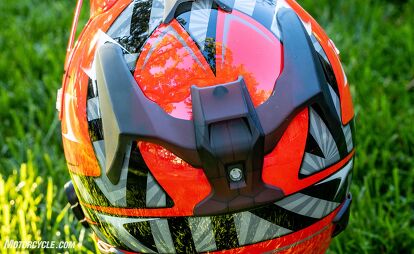




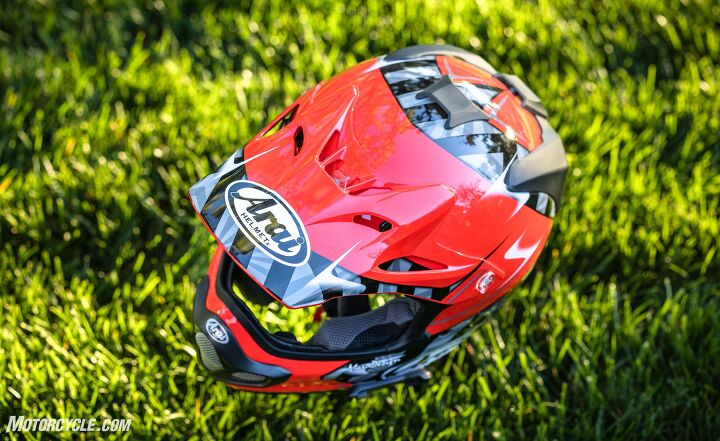






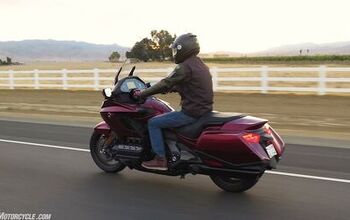

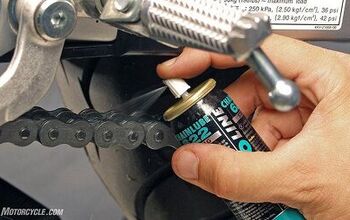
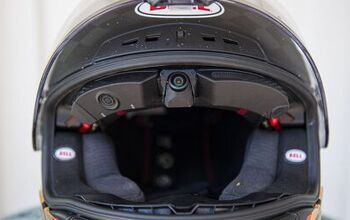














Comments
Join the conversation
Love my Signet, then Profile, now Signet-Q! I wish they made an offroad / adventurer hat for us Long Oval types!
And although Arai will never do it - a Modular would be great!
I've owned many of the Arai VX-Pro iterations over the years
and still has one. I've purchased those with my hard earned cash. Best fitting, comfortable, well vented and, as mentionned by Mr. Brasfield, perfect finish. It is definitly somewhat heavy compared to dedicated MX lids tho.
I got a cheaper carbon-fiber MX helmet handed to me for a bike launch a while ago and I find myself reaching for that super-lightweight helmet when hitting the MX/SX tracks but I go back to my VX-Pro for higher speed stuff...